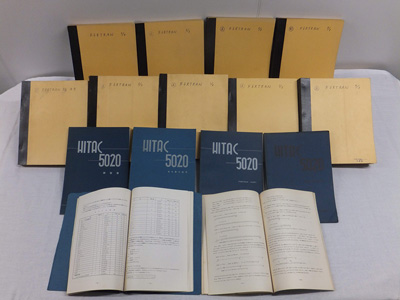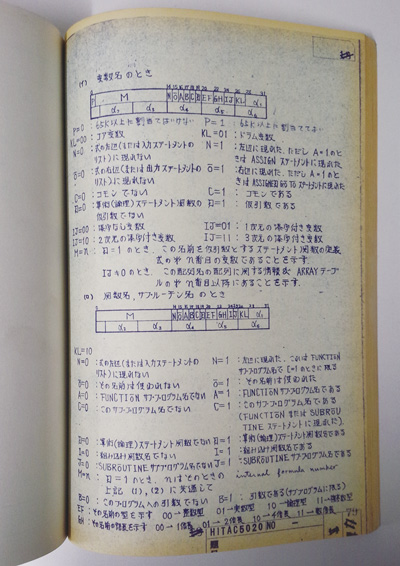

- Home >
- Artifacts of IP Heritage >
- 2016 >
- HARP 5020 related materials
HARP 5020 related materials


| Manufactured in | 1965 |
|---|---|
| Manufactured by | Hitachi, Ltd. |
| Owner | Division of Advanced Information Technology & Computer Science Institute of Engineering Tokyo University of Agriculture and Technology |
| Location of historical materials | Division of Advanced Information Technology & Computer Science Institute of Engineering Tokyo University of Agriculture and Technology 2-24-16 Naka-cho, Koganei-shi, Tokyo 184-8588, Japan |
| Visitor information | Not open to the public (Ask for a visit) |
| Contact | Division of Advanced Information Technology & Computer Science Institute of Engineering Tokyo University of Agriculture Technology Tel.+81-43-388-7448 https://www.eecs.tuat.ac.jp/ |
HARP 5020 (Hitachi ARithmetic Processor or Hitachi Automatic Rapid Processor) is the first optimizing compiler developed in Japan. It was used by many researchers across Japan as the FORTRAN compiler of the HITAC 5020 computer, the first computer of the computer center, University of Tokyo, established for common use in 1965.
It adopted the IBM’s FORTRAN IV language, and added quadruple-precision arithmetic, DEBUG statements, magnetic drum I/O statements, etc.
The new method for effective use of multiple registers and instruction set of HITAC 5020 was invented to optimize object codes without sacrificing compiling speed. As the result, the object code of the innermost loop of the triple nested loop of the matrix multiplication program consisted of only 8 instructions.
HARP 5020 is a five-pass compiler.
Pass 1: lexical analysis,
Pass 2: syntax analysis and intermediate representation generation,
Pass 3: optimization of DO-loops,
Pass 4: address assignment for variables,
Pass 5: object code generation.
It was developed by a so-called chief-programmer-team whose leader was Ikuo Nakata of the central research laboratory of Hitachi. The number of the members of the team was 1 at the beginning, and was increased gradually up to 15 according to the progress of work.
